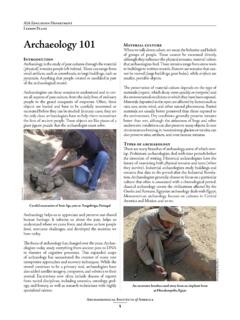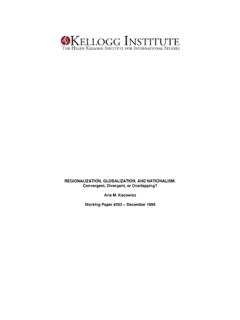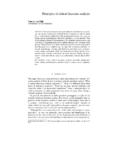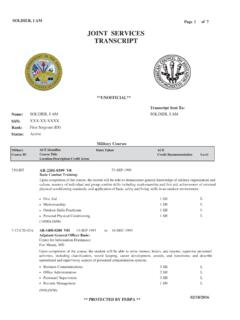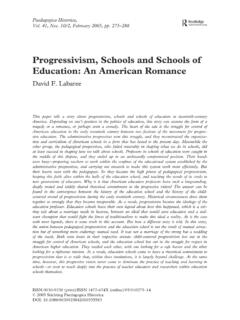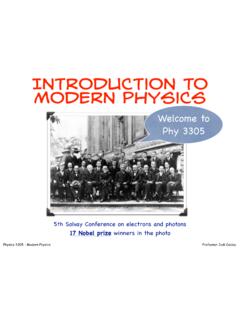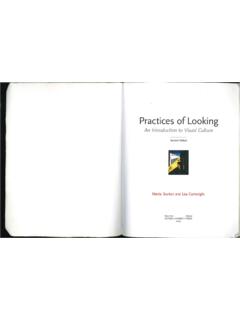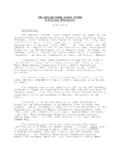Transcription of Heritage, Conservation, and Archaeology: An Introduction
1 To add to these problems, few archaeological projects have incorporated site conservation as a viable strategy in addressing these issues either before or during excavation (Figure 3). This has been in part because of archaeology s neglect of the long history and tradition of conservation theory and practice and the general misperception of conservation as an exclusively off-site, post excavation Heritage, Conservation, and Archaeology: An IntroductionBy Frank G. MateroHeritage and conservation have become important themes in current discussions on place, cultural identity, and the preservation of the past. Archaeological sites have long been a part of heritage and its display, certainly before the use of the term heritage and the formal study of tourism.
2 However, current concerns with their escalating destruction can be attributed to the perception among the public and professionals alike that archaeological sites, like the natural environment, represent finite nonrenewable resources deteriorating at an increasing rate. This deterioration is because of a wide array of causes, ranging from neglect and poor management to increased visitation and vandalism, from inappropriate past treatments to deferred maintenance (Figures 1 and 2). No doubt the recent pressures of economic benefits from tourist activities in conjunction with increasing communication and mobility have caused accelerated damage to many sites unprepared for development and Institute of America1 AIA Site Preservation Program Heritage, Conservation, and Archaeology Figure 1.
3 Landscape erosion from uncontrolled visitation at Tsankawi, Bandelier National 2. Site damage and attrition from weathering and exposure, Gordion, associated with technical issues and remedial solutions. On the other hand, specialists in conservation and heritage management have been largely absent in the recent and rapidly expanding discussions on the meaning, use, and ownership of heritage for political and economic purposes. Both professions have avoided a critical examination of their own historical and cultural narratives pertaining to the construction of sites through excavation, analysis, conservation, and primary objective of conservation is to protect cultural heritage from loss and damage.
4 Conservators accomplish this through both preventive and remedial types of intervention. In so doing, conservation embraces the technical means by which heritage may be studied, displayed, and made accessible to the public. In this way, the conservation of archaeological sites is like other heritage conservation. Implicit in conservation s objectives is the basic requirement to remove or mitigate the causes of deterioration. For archaeological sites, this has a direct and immediate effect on visual legibility and indirectly conditions our perceptions and notions of authenticity. Among the repertoire of conservation techniques applied to archaeological sites are structural stabilization, reconstruction, reburial, protective shelters, and a myriad of fabric-based conservation methods.
5 Each solution affects the way archaeological information is preserved Archaeological Institute of America2 AIA Site Preservation Program Heritage, Conservation, and Archaeology and how the site is experienced and understood, resulting in a push and pull of competing scientific, associative, and aesthetic values (Figures 4 and 5). The practices of archaeology and conservation appear by their very nature to be oppositional. Excavation, as one common method by which archaeologists study a site, is a subtractive process that is both destructive and irreversible. In the revealing of a site, structure, or object, excavation is not a benign reversal of site formational processes but rather a traumatic invasion of a site s physico-chemical equilibrium, resulting in the unavoidable deterioration of associated materials.
6 Conservation, on the other hand, is predicated on the safeguarding of physical fabric from loss and depletion, based on the belief that material culture possesses important scientific and aesthetic information as well as the power to inspire memory and emotional responses. In the first case, the informational value embodied in the materiality of objects and sites has been expressed in conservation rhetoric through the concept of integrity. Integrity can manifest in many states as purity ( , free from corruption or adulteration) or completeness of form, composition, or context. It has come to be an expression of authenticity in that it conveys some truthfulness of the original in time and space, a quality constructed partly in response to the interventions perpetrated by us in our effort to preserve.
7 Whereas archaeology decontextualizes the site by representing it ex situ, , in site reports and museum exhibits, whereas historic preservation represents and interprets the site in archaeological sites are also places. If we are to identify and understand the nature and implications of certain physical relationships with locales established through past human thought and experience, we must do it through the study of place. Places are contexts for human Figure 3. Emergency stabilization of structures and paintings during excavation, atalh y k, 4. Anastylosis at Paestum, Italy, versus reconstruction at Aztec Ruins, 5. Protective shelters (Peru) versus interpreted site reburial ( )experience, constructed in movement, memory, encounter, and association.
8 While the act of remembering is acutely human, the associations specific places have at any given time will this last respect, conservation itself can become a way of reifying cultural identities and historical narratives over time through interpretation. In the end, all conservation is a critical act in that the decisions regarding what is conserved, and who and how it is presented, are a product of contemporary values and beliefs about the past s relationship (and use) to the present. Nevertheless, technical intervention that is, what is removed, what is Archaeological Institute of America3 AIA Site Preservation Program Heritage, Conservation, and Archaeology added, what is modified is the concrete expression of a critical judgment thus formed in the course of this process.
9 What, then, does it mean to conserve and display an archaeological site, especially when what is seen was never meant to be displayed as such, or at least in the fragmented manner viewed?Making SitesArchaeological sites are made, not found. They are constructed through time. Display as intervention is an interface that mediates and therefore transforms what is shown into heritage, and conservation s approaches and techniques have always been a part of that process. Beginning with the Sixth International Congress of Architects in Madrid in 1904 and later with the creation of the Charter of Athens following the International Congress of Restoration of Monuments (1931), numerous attempts have been made to identify and codify a set of universal principles to guide the conservation and interpretation of structures and sites of historic and cultural significance.
10 Despite their various emphases and differences, all these documents identify the conservation process as one governed by absolute respect for the aesthetic, historic, and physical integrity of the structure or place and requiring a high sense of moral responsibility. Implicit in these principles is the notion of cultural heritage as a physical resource that is at once valuable and irreplaceable and an inheritance that promotes cultural continuity in a dynamic way. Out of this dilemma, our current definition of conservation has emerged as a field of specialization concerned primarily with the material well-being of cultural property and the conditions of aging and survival, focusing on the qualitative and quantitative processes of change and deterioration.
